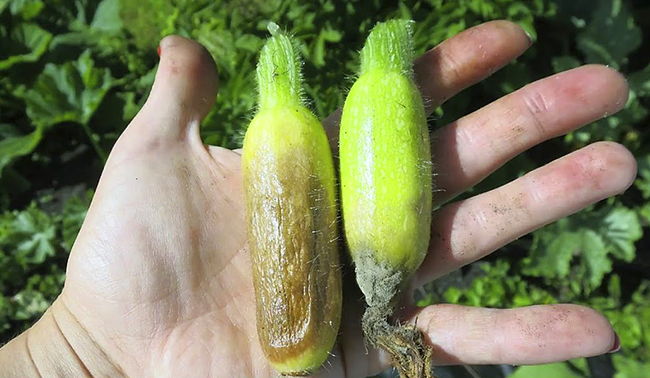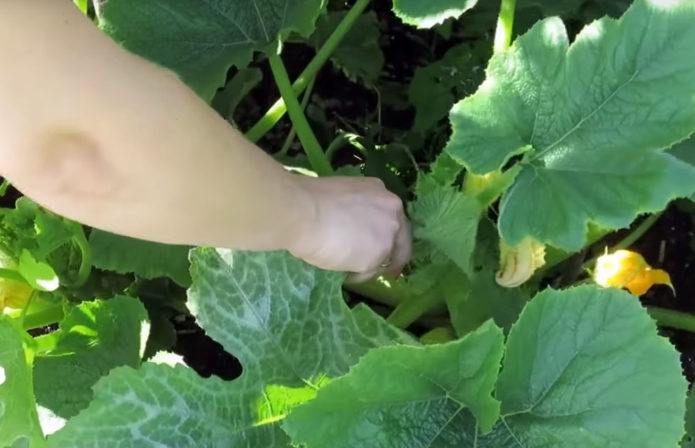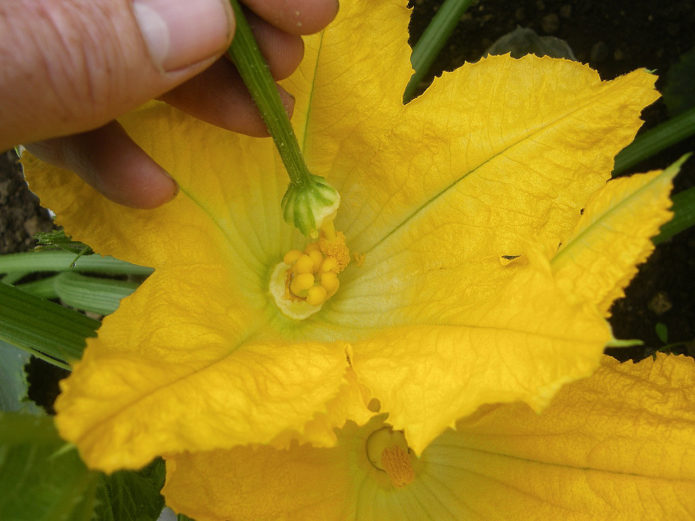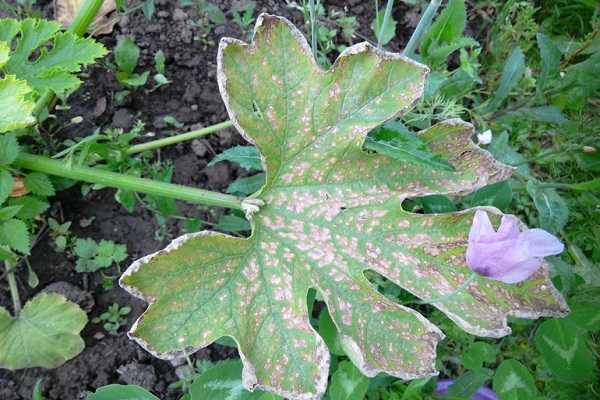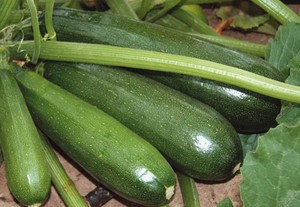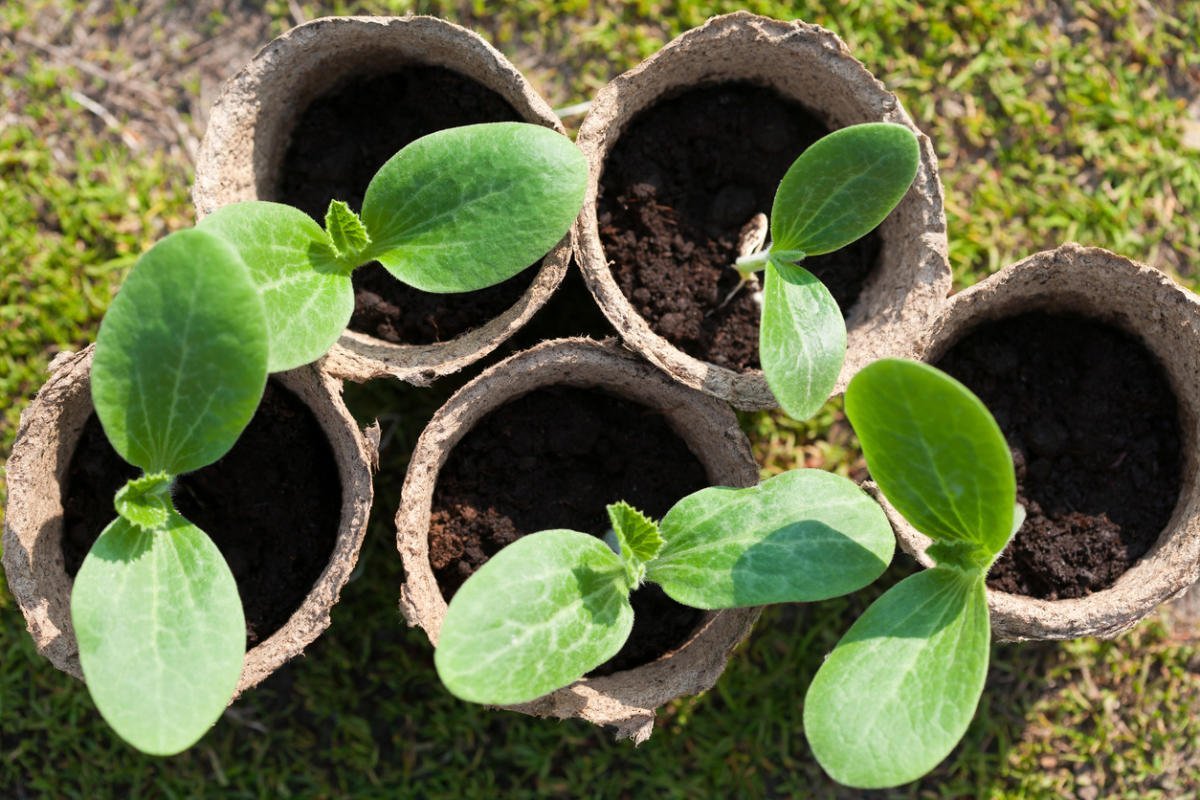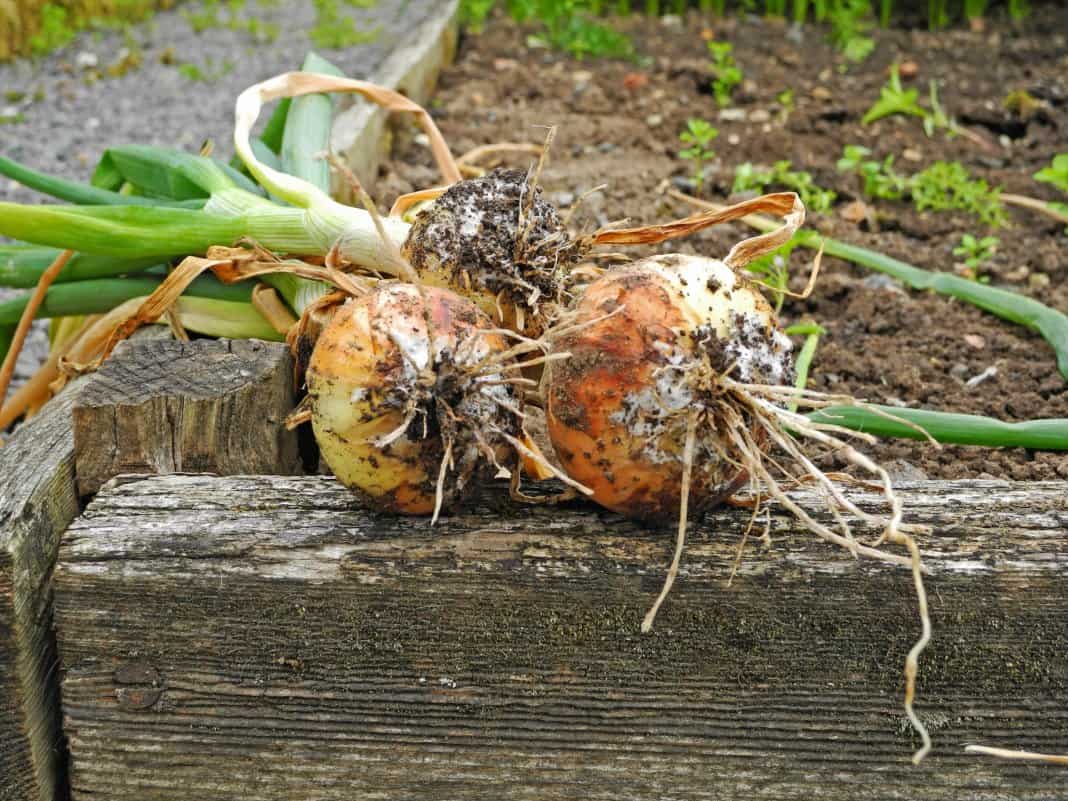Zucchini is considered an unpretentious vegetable crop that can grow in the garden almost like a weed. But experienced gardeners can confirm that this opinion is erroneous - sometimes it is not easy to get a good harvest, since small fruits begin to disappear immediately after they appear, not having time to reach the required size. It will be useful for novice vegetable growers to find out why zucchini turn yellow and rot in a small garden and how to cope with the problem.
Content
Why small zucchini turn yellow and rot in the garden: the main reasons
There are several reasons at once that can cause rotting of young zucchini, these include:
- violation of crop rotation;
- excess moisture content in the soil;
- excessive content or deficiency of nutrients in the soil;
- lack of pollination;
- diseases and pests.
If the necessary measures are not taken, the impact of negative factors can destroy all the fruits.
How to preserve the harvest, taking into account the identified problem
The correct actions of the summer resident will help save the harvest and avoid mistakes when growing zucchini in the future.
Violation of crop rotation
Having received a good harvest of zucchini, many gardeners do not think about choosing a place for the next planting of a crop and simply plant it in the same place, thus disrupting the sowing order.
Crop rotation is a scientifically based rotation of crops in time and space, which should be observed by everyone who grows vegetables. In the process of development, plants release substances into the soil that are toxic to members of the same family, but absolutely do not harm other crops. In addition, pathogenic microorganisms and harmful insects remain in the soil, which create certain problems for plantings.
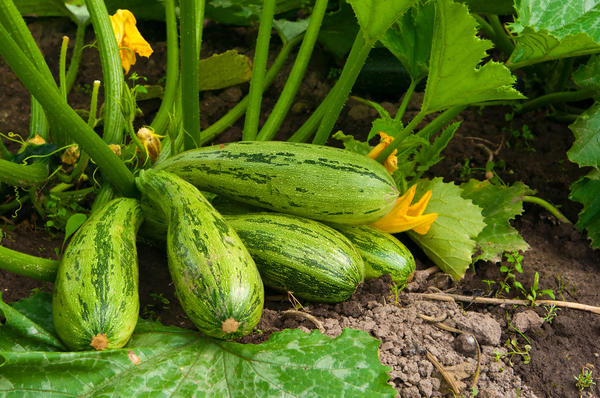
The ideal place for planting zucchini seedlings is considered the most sunlit plot of land, where there are no other taller plantings.
For zucchini, unacceptable predecessors are all representatives of the pumpkin family - cucumbers, melons, pumpkins, watermelons, as well as the zucchini themselves. Accordingly, in the next season, it is better to place plantings where nightshades grew earlier - tomatoes, peppers, potatoes, eggplants, and it is recommended to plant zucchini in the same place no earlier than after 4–5 years.
To slightly reduce the rotting of vegetables that were planted in violation of crop rotation, you must strictly follow the rules for caring for them, and also carefully monitor that there are no pests and signs of disease on the bushes.
Excess moisture in the soil
Zucchini is a southern heat-loving culture that loves the sun and high temperatures, but does not tolerate an excess of moisture in the soil. There can be two reasons for this problem - excessive watering or rainy weather.Summer in our latitudes is far from always pleasing with good weather, and prolonged rains are observed more often than warm days, but even in hot periods some summer residents take care of the zucchini too zealously and literally "flood" the bushes. As a result, a greenhouse effect is created, due to which the fruits begin to rot while still in the ovary.
If the reason for the rotting of young zucchini lies in rainy weather, it is unlikely that it will be possible to influence the situation - you will have to wait for sunny days. To protect the beds from too much moisture, cover them with a film or tarp, and the plants should be well ventilated. It is better to protect each bush separately, setting up a shelter over its center so that moisture does not get on the flowers and the formed ovaries.
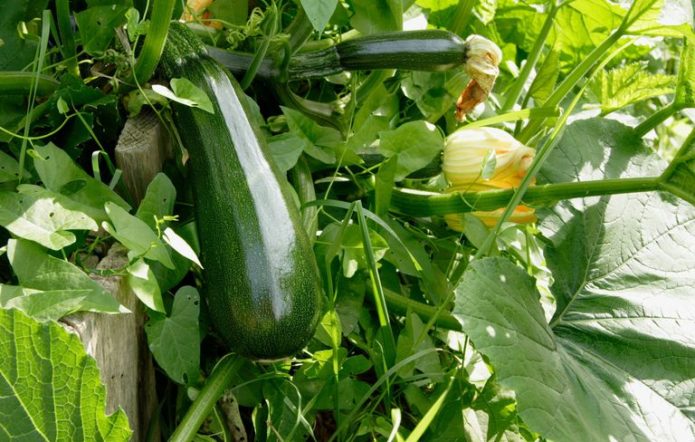
Zucchini is characterized by resistance to drought due to its strong root system, so plants are able to develop even in the absence of rain.
On rainy days, watering zucchini should be abandoned, and in hot weather, water the plantings no more than once a month, and the amount of liquid should not be less than 20 liters for each bush. To irrigate the plantings, warm water is used, it should be poured exactly under the root with a not too strong stream so as not to erode the ground.
You can remove excess moisture from the soil using a number of simple steps:
- Carefully loosen the soil around the bushes 10–20 cm deep - this will dry the soil and make it breathable. It is not necessary to remove weeds around the zucchini in rainy weather, as they draw out excess moisture, preventing the development of decay processes.
- It is good to inspect the planting, remove all rotten fruits and yellow leaves, especially those lying on the ground - this way you can prevent the spread of rot to the rest of the bushes.
- Straw, pieces of plywood or glass should be placed under all young fruits that touch the soil surface - the proximity of wet soil increases the likelihood of rotting.
- Remove all flowers from young zucchini ovaries, and lightly rub the tips on which they grew with ash - it forms a small crust that prevents the accumulation of moisture and the development of putrefactive processes.
On rainy days, such events should be carried out regularly in order to prevent excessive moisture and compaction of the soil.
Excess nutrients
Too fertile soil or frequent feeding leads to the fact that a large amount of lush greenery appears on the bushes, and the development of fruits slows down. This happens for two reasons - nutrients are not distributed correctly during the period of ovary formation, and large leaves create a shadow that prevents the sun's rays from reaching the flowers and young zucchini, as a result of which they begin to rot.
You need to plant zucchini on moderately fertile soils and do not abuse the feeding of the bushes. In addition, it is necessary to thin out the planting a little - cut off part of the leaves that create shadow and interfere with the normal development of the fruit:
- With a sharp knife, cut off several large leaves from the middle of the bush, leaving 3-4 cm to the lash, as well as all the yellow leaves.
- The next day, spray the plantings with a solution of ordinary greens (brilliant greens) - a teaspoon in a bucket of warm water.
When feeding zucchini with fertilizers, it should be remembered that before the start of intensive flowering, plants need nitrogen, and later they need phosphorus, calcium and potassium.
Deficiency of nutrients
One of the reasons for the poor harvest and rotting of young fruits is the lack of microelements boron and iodine in the soil. Zucchini are especially sensitive to this situation - serious problems may appear with the development of their ovaries or ripening.
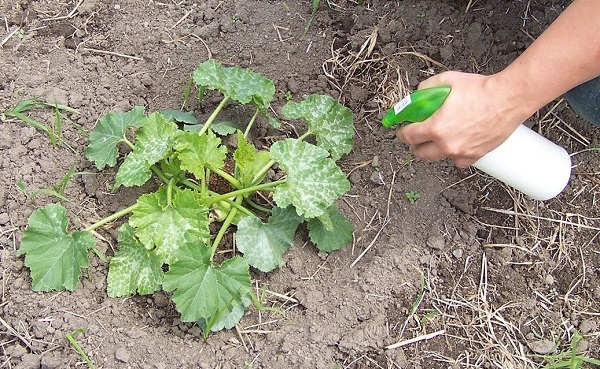
Prevention with iodine affects the growth of fruits - they are formed 10-15% larger and ripen a few days earlier
To restore the optimal balance of trace elements, plantings can be sprayed with boric acid (1 g of the product per 5 L of water) and a pharmacy tincture of iodine at the rate of 30 drops of the product per 10 L of water. In addition, you can use complex fertilizers containing these substances, as well as manure, chicken droppings and other organic matter.
No pollination
In rainy weather, the cause of damage to young zucchini is not only an excess of moisture, but also a lack of pollination - non-pollinated flowers accumulate moisture and begin to rot, after which the decay process spreads to other fruits and leaves.
In the planting of zucchini, there must be at least a few bushes with yellow flowers that attract bees and bumblebees, and it is better to grow flowers next to the crop, and arrange them so that insects can freely fly up to the zucchini.
Manual pollination, which is difficult to do without in a rainy summer, is carried out as follows:
- Pluck a male flower by checking the maturity of the pollen (it must be fluffy).
- Tear off the petals on the flower and gently pollinate the female ovary.
Diseases and pests
Rotting zucchini can cause powdery mildew, downy mildew, white and gray rot, as well as the main crop pests - slugs. It is quite simple to recognize the defeat of plantings by fungal diseases - white bloom appears on the leaves, and characteristic depressed areas on the fruits, after which they begin to disappear, and first of all, the pathological process affects young leaves and fruits.
If the disease has already begun to develop, it is necessary to treat the plantings with chemicals - "Ridomil", "Topaz", "Tiovit", "Fundazol". Before using the preparations, it is important to read the instructions, be sure to use personal protective equipment and process the plantings at least a month before the fruit ripens.
You can replace chemistry with folk remedies - a solution of potassium permanganate, strong infusions of onions and garlic.
Fungal diseases and damage by pests are easier to prevent than to deal with the problem later - for this you need to plant mustard, lavender, garlic, sage and other plants with a strong odor next to zucchini, as well as eliminate excessive soil moisture and monitor the density of plantings.
Despite the fact that zucchini does not require too careful care, to obtain a good harvest, careful attention to planting, adherence to the rules of watering, feeding and caring for them is necessary. As a result, the bushes will reward their owner with beautiful, strong and large fruits.
